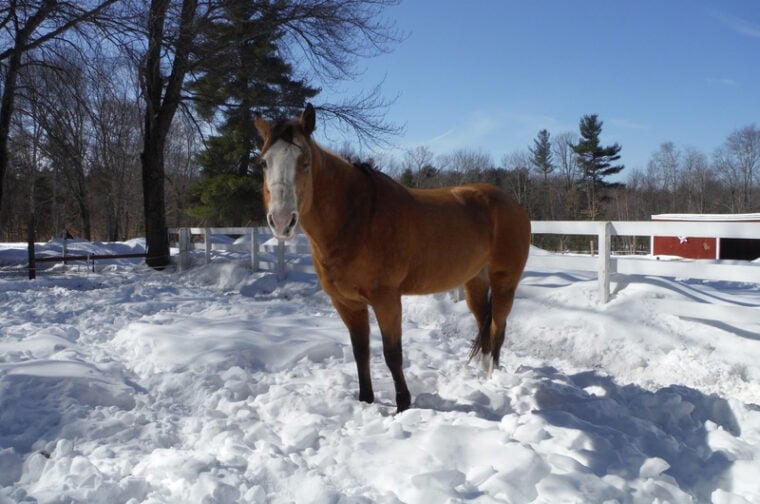
It’s hard for us to imagine spending all our time outside during the winter months, but it’s just second nature for horses acclimated to the cold weather. Horses are inherently designed to cope with winter through cold weather adaptations such as growing thick and dense winter coats and adding an extra layer of fat when the days start getting shorter.
But what about their hooves? Standing in the snow all day must make their feet and hooves extremely cold and subject to frostbite, right? As it turns out, horse hooves do not get cold. Horse hooves have evolved to winterproof themselves to survive the winter months. Keep reading to learn more about how horse hooves adapt to the cold, wintery, snowy, and icy weather.
Do Horses Hooves Get Cold?
You may have seen videos or images of horses standing in deep snow and wondered how they could pull that off. If we spend extended periods of time in the snow, we could get frostbite and permanent skin and tissue damage.
Horses have developed coping mechanisms to avoid such things. The legs below the carpus and hocks are made mostly of bones and tendons, tissues that won’t freeze easily. Because of this lack of muscle tissue in the lower limbs, the leg tissues need less blood circulation and will lose less heat.
When exposed to freezing temperatures, blood-shunting mechanisms in their hooves will alter the body’s circulation patterns to preserve their body warmth. This mechanism may also be partly why some horses develop laminitis in winter.
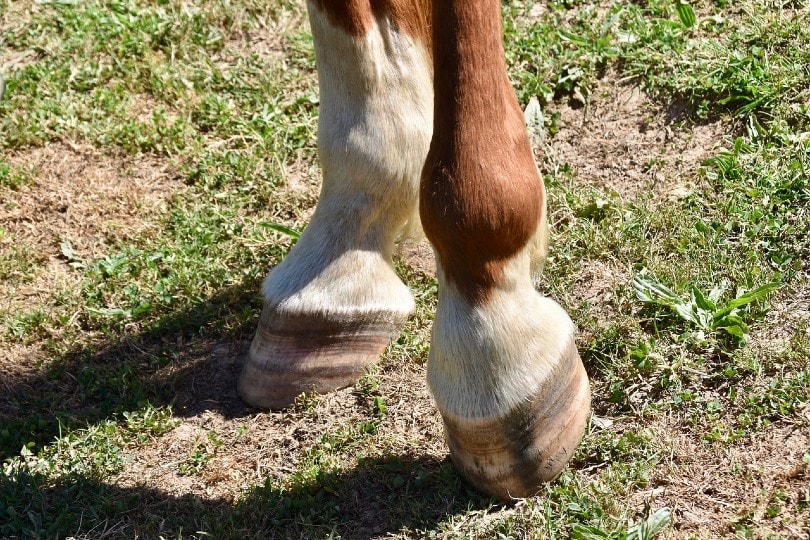
What Is Winter Laminitis?
Winter laminitis is a circulatory condition that can cause sore hooves in horses exposed to freezing temperatures. This condition occurs most often in horses with impaired hoof circulation and those with existing metabolic disorders like insulin resistance. It causes pain and inflammation in the laminae (soft structures of the hooves that anchor the coffin bone to the hoof wall).
Signs of winter laminitis include:
- Mild discomfort
- Sudden lameness
- Sawhorse stance
- Abnormal gait
- Increased pulse
- Foot lifting
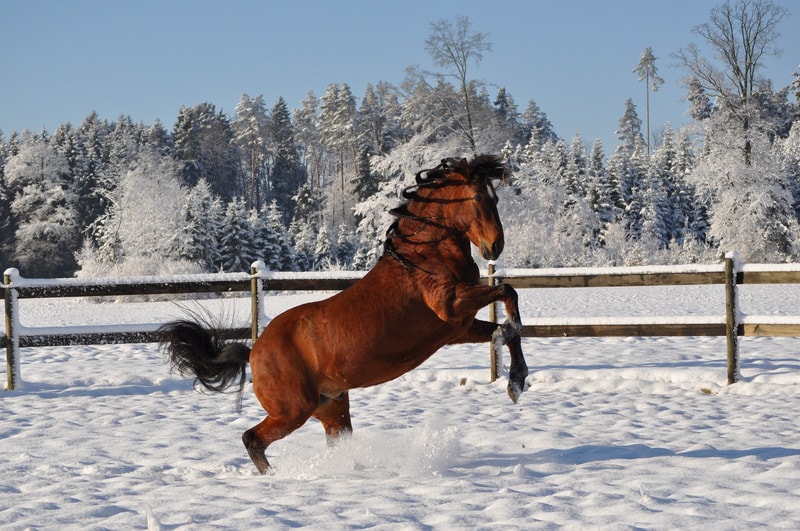
What Happens to Horses’ Hooves in the Winter?
Your horse’s hooves undergo a series of changes during the winter months. Let’s take a closer look at these changes now.
Slow Growth
The growth of hooves is influenced by several factors, including the horse’s overall health, its environment, its activity level, the work it performs, and the quality of hoof care. Many of these factors shift when the seasons change.
They are typically working less and grazing less in winter than at other times of the year. They’ll also spend more time eating hay in their stalls and burn more calories to keep themselves warm. The nutritional content of the field grasses they eat will also shift after the first few freezes.
As a result, horses’ hooves tend to grow much more slowly during the winter, but you should still have them trimmed every six to 12 weeks.
Slow hoof growth can also delay the resolution of hoof-related issues such as cracks or defects. If the hoof grows slower, these defects will take longer to grow out. This sometimes isn’t an issue as the horse tends to work less during the colder months, but if your usually barefoot horse suddenly needs to work harder, it may wear its hooves out faster than they can grow. In this case, it will need to be shod. Your farrier will be able to advise you on what is best for your horses hooves.
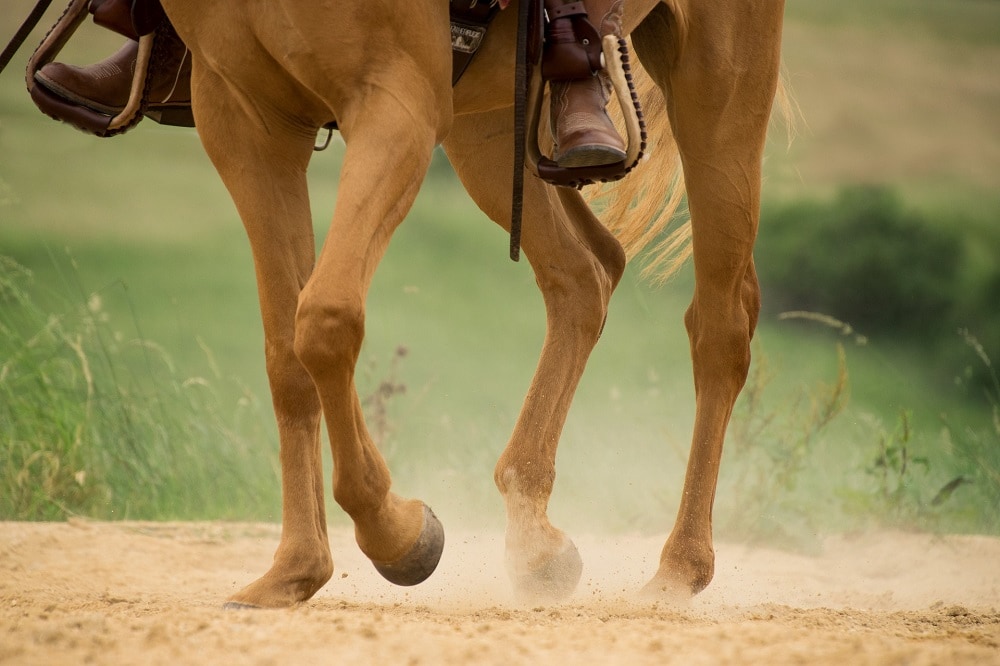
Snow & Ice Accumulation
Horse hooves may collect ice or snowballs when there’s snow on the ground. These balls of packed snow can make it difficult for your horse to walk properly, increasing the likelihood of it slipping and falling. Packed snow and ice can also cause stress on the tendons and joints. This is why removing the snow and ice build-up daily is so important, especially after a big snowfall.
The developed ice balls will fall out on their own when it’s slushy outside. However, when temperatures dip low, the ice can become so compacted that you’ll need to approach it with appropriate tools to remove it. Some owners invest in anti-snowball pads, a plastic or rubber insert that sits between a horse’s shoe and its foot to force snow and ice out as your horse takes a step.
What Can Happen If Hoof Care Is Neglected During Winter?
Hoof care is just as important in the winter months as it is during the other seasons of the year. If you neglect to do your part to ensure healthy hooves, your horse can suffer several consequences.
Bruising
Hooves can incur impact bruising after working on frozen ground. Bruises sometimes present as darkened areas with small cracks, but they aren’t always visible. Never force your horse to walk on the frozen ground if they appear reluctant to do so. You’ll need to invest in shoes with protective padding if you plan to ride much during winter.
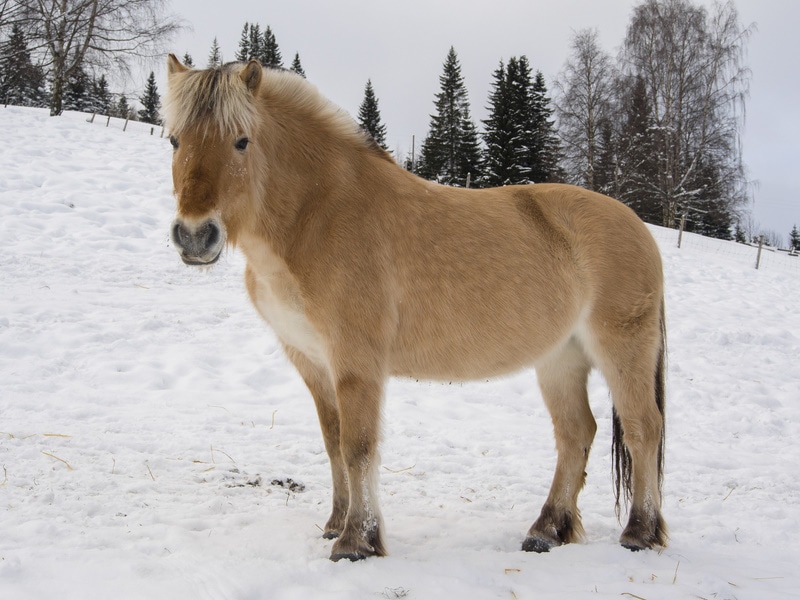
Thrush
Thrush is a condition that occurs more often in wet winters than those in snow and freezing temperatures. This infection occurs in the central and lateral sulcus of the frog of a horse’s foot. It produces a foul-smelling black discharge and results in much pain in the affected area.
Cleaning hooves should be part of your everyday care routine.
Soft Hoof Walls
Horses living in areas that experience excessively moist winters may develop softened hoof walls. If they do not have a solid hoof wall, more weight will get distributed to other areas of the hoof, making them more overworked than they are designed to be. Walls can start to crack or flare out in places, meaning there is little to no strength for the entire hoof.
Abscesses
If you live in an area that experiences up and down weather in winter, such as alternating wet and dry spells, your horse may develop abscesses on its hooves. These occur due to the hoof wall expanding and contracting over and over. Bacteria can get into the hoof capsule, potentially multiple, causing an abscess that will need to be drained.
Abscesses are extremely painful and result in acute lameness. They must be dealt with as soon as possible by your vet, followed by care from your farrier.
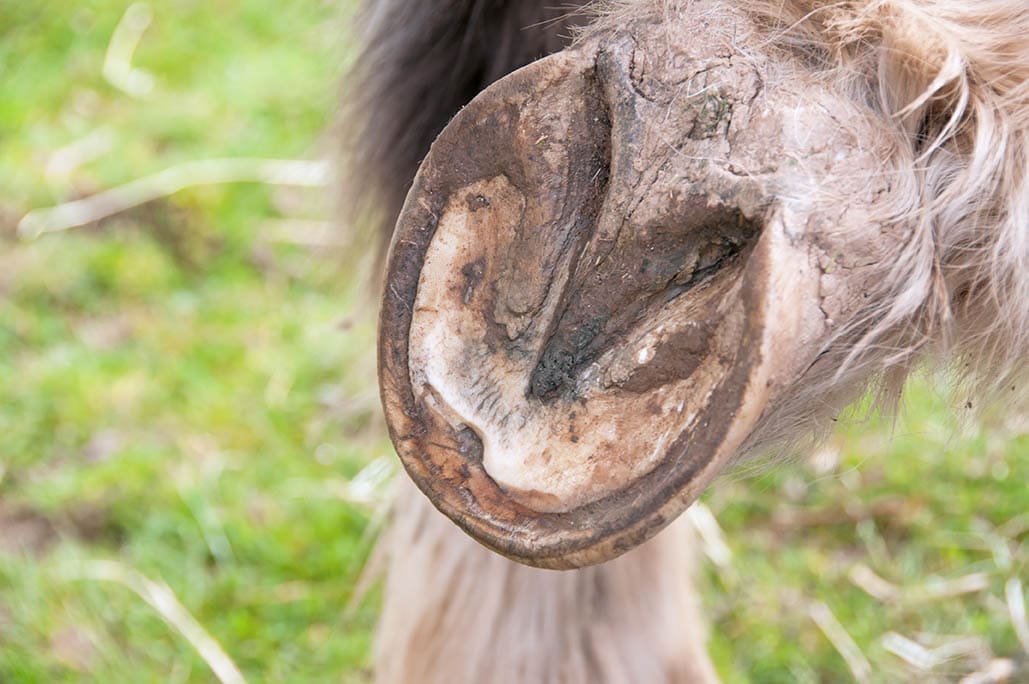
Conclusion
While horses have developed coping mechanisms for dealing with the cold weather, that doesn’t mean you can neglect hoof care during the winter. Ensure you’re picking out ice and snowballs from the hooves daily and that you’re still getting them trimmed every six to 12 weeks.
Proper preventative care ensures your horse’s hooves will stay healthy all winter so that they can get off on the right foot come springtime.
See also: How Horses Stay Warm in the Winter & How to Help Them Do So
Featured Image Credit: Danni R, Pixabay








